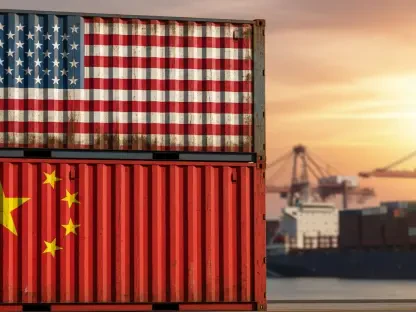The article under review provides an extensive and detailed examination of the growth and impact of cross-border e-commerce on China’s foreign trade, focusing especially on how it influences consumer behavior and economic dynamics. The primary subject of this analysis is the thriving cross-border e-commerce sector in China and its role as a significant growth driver in the country’s economy.
The article opens with an anecdote about Zhang Wanchen, a 34-year-old professional from Guangzhou, who makes use of online platforms to purchase a variety of imported goods. This narrative highlights the convenience and increasing popularity of online shopping for foreign products among Chinese consumers. Zhang’s preference for the authenticity and value of imported goods mirrors a broader trend across the nation.
The Rise of Cross-Border E-Commerce in China
Changing Consumer Behavior
A critical theme that emerges is the significant purchasing power of Chinese consumers, particularly for imported and foreign-branded products. This shift in consumer behavior is driven by upgraded consumption patterns, fostered by supportive policies, such as lower tariffs and improved cross-border logistics. As the article underscores, cross-border online shopping, a relatively unknown term two decades ago, is now a pivotal component in sustaining foreign trade growth in China.
To provide a broader context, data from a report by JD’s Consumption and Industry Development Research Institute is cited. This report identifies that individuals aged 26-35 are the primary consumers of imported goods, comprising 45 percent of the total buyers, with those in the 46-55 age group showing the fastest growth in purchasing these products. The most popular categories include personal care items, cosmetics, food and beverages, as well as maternity and infant products. The report also identifies a growing interest in imported goods among consumers in lower-tier cities and markets.
Demand for Diverse and Niche Products
Another key point elaborated upon is the rise in demand for diverse, personalized, and niche overseas products among Chinese consumers. This demand has considerably influenced the scope and nature of cross-border e-commerce. Zhang Zhouping, a senior analyst at the Internet Economy Institute, points out that this sector has significantly contributed to diversifying product supplies and fostering new business models, thereby promoting consumption recovery. He stresses the need to enhance the list of imported retail goods available for cross-border online purchases to meet consumer demands more effectively.
The increasing appetite for personalized and unique products has created a varied marketplace, encouraging brands to offer a wide array of options to cater to specific preferences. Such diversity not only meets the evolving expectations of sophisticated consumers but also helps in sustaining the momentum of cross-border e-commerce. These trends signal a robust transformation in consumer purchasing patterns and preferences, driven by the appeal of international goods that offer better quality or unique attributes. Hence, it becomes crucial for e-commerce platforms to keep pace with this changing landscape by continually updating and expanding their product offerings.
Economic Impact and Growth
Data on Industry Growth
The article then delves into the rapid growth of China’s cross-border e-commerce industry, backed by data from the General Administration of Customs, which records a 1.22 trillion yuan ($171.5 billion) import and export scale in the first half of the previous year—a 10.5 percent year-on-year increase. This growth is attributed to China’s continued efforts in opening up, combined with enhanced logistics and delivery systems, and a rising consumer demand for imported goods.
Chen Tao, an analyst from Analysys in Beijing, highlights the increasing penetration of cross-border e-commerce in lower-tier cities and townships, fueled by innovations such as livestreaming videos. This method has become a favored way for consumers, particularly those from the post-1980s and post-1990s generations, to gain detailed information about overseas products.
The adoption of livestreaming videos as a marketing tool has revolutionized how products are showcased to potential buyers, offering a more interactive and engaging shopping experience. This trend has enabled consumers in smaller cities and rural areas, who may have limited access to high-end retail outlets, to explore and purchase international products with ease. The rise in cross-border e-commerce in these regions underscores the expanding reach of digital platforms and the growing inclusivity of the global marketplace.
Influence of Chinese Platforms Overseas
The article doesn’t just focus on foreign goods coming into China; it also highlights the growing influence of Chinese platforms in overseas markets. Temu, a cross-border e-commerce platform launched by PDD Holdings, has quickly gained traction in over 50 countries by offering a diverse range of competitively priced merchandise. Similarly, the fast-fashion retailer Shein is aiding Chinese manufacturers and brands in expanding their international presence through robust digital and flexible supply chains.
Cindy Tai, vice-president of Amazon and head of Amazon Global Selling Asia, echoes that cross-border e-commerce is emerging as a major growth driver for China’s foreign trade. She indicates that their strategy will focus on helping Chinese merchants enhance brand building, simplify global operations, and scale up global presence, reflecting the broader trends and shifts in the digital retail landscape.
The success of platforms like Temu and Shein signifies the potential for Chinese companies to dominate the global e-commerce arena by leveraging their expertise in efficient supply chains and digital innovation. Their ability to meet the demands of international markets has not only boosted China’s export capabilities but also positioned these companies as prominent players in the global digital economy. This expansion highlights the reciprocal nature of cross-border e-commerce, where both the import and export sectors contribute to a country’s economic growth.
Role of Major Domestic E-Commerce Platforms
Revolutionizing the Retail Sector
The article continues by examining the profound impact of major domestic e-commerce platforms like Alibaba, JD, and PDD. These platforms have revolutionized the retail sector by connecting numerous business owners with millions of consumers seeking cost-effective deals. Events like Alibaba’s Singles’ Day shopping carnival have redefined the traditional retail landscape and stimulated significant economic activity.
Mo Daiqing from the Internet Economy Institute underscores the essential role of the online retail segment in boosting consumption, generating employment, and improving livelihoods, thereby augmenting the resilience of the real economy. Promotional events are identified as key stimuli for consumer spending and overall consumption recovery.
The effectiveness of promotional events in stimulating economic activity cannot be overstated. They not only encourage higher spending but also create opportunities for small and medium-sized enterprises (SMEs) to reach a broader audience, thus driving entrepreneurship and innovation. As major e-commerce platforms continue to implement such strategies, they play a vital role in sustaining consumer engagement and economic resilience, particularly in challenging times.
Shifts in Consumer Behavior
The narrative explores how consumer behavior is shifting towards more rational purchasing decisions, focusing increasingly on quality and value. E-commerce platforms must adapt to these changing preferences by enhancing supply chains and optimizing business models.
Wang Yun of the Chinese Academy of Macroeconomic Research highlights how online shopping has reduced transaction inefficiencies, improved commodity exchange, and promoted high-quality economic growth, which is a key aspect of New Retail. Retail sales data supports this trend, with a 3.5% year-on-year growth in the first seven months of the previous year, alongside a 9.5% rise in online retail sales.
This growing preference for quality and value indicates a more discerning and knowledgeable consumer base. As buying decisions become more rational, e-commerce platforms must prioritize transparency, product authenticity, and exceptional customer service to build and maintain trust and loyalty. This shift signifies a maturing consumer market where long-term brand relationships are rooted in reliability and satisfaction, rather than just low prices or promotional tactics.
In summary, cross-border e-commerce has profoundly reshaped consumer behavior and driven economic growth in China, showcasing a dynamic and continually evolving sector. As consumers become more sophisticated, the demand for varied and high-quality products increases, encouraging e-commerce platforms to innovate and adapt. The influence of these platforms goes beyond national borders, strengthening China’s position in the global digital economy and creating new opportunities for economic development.








